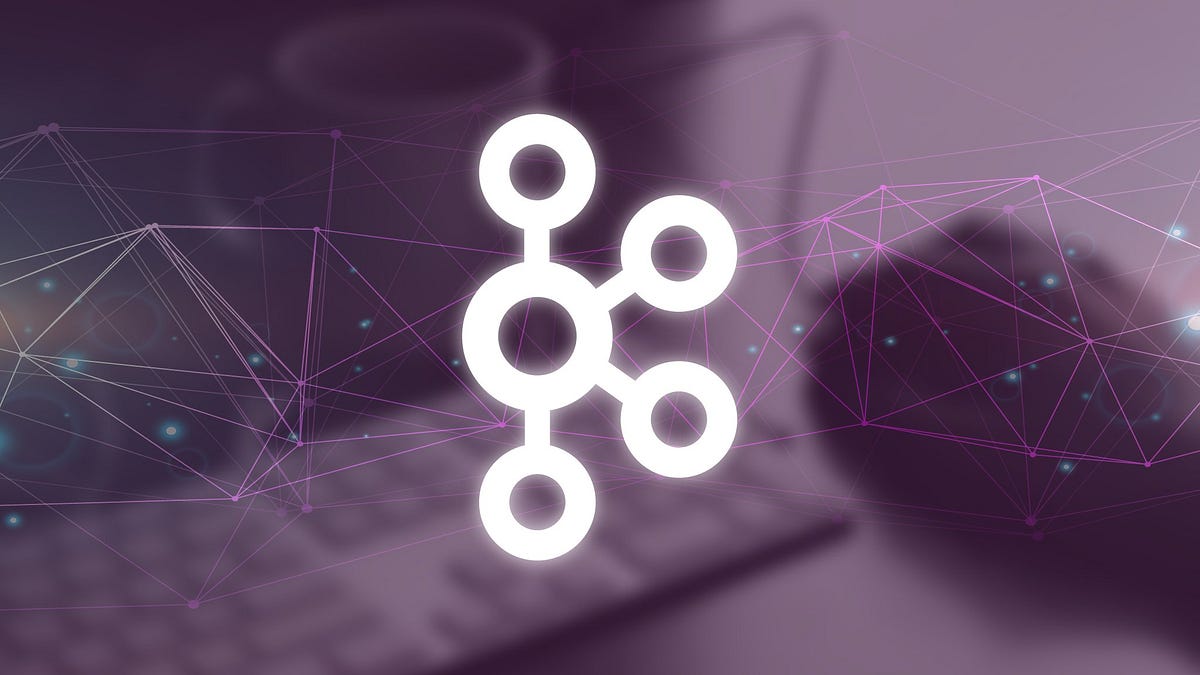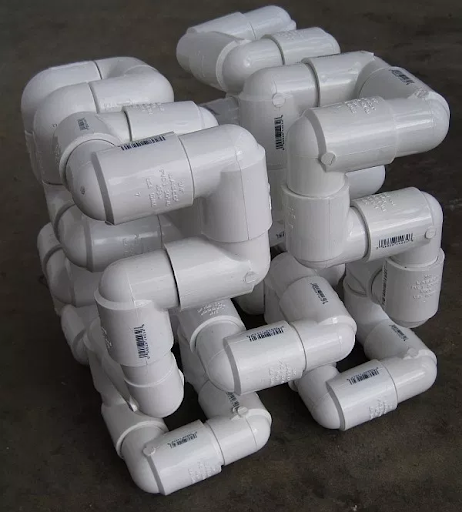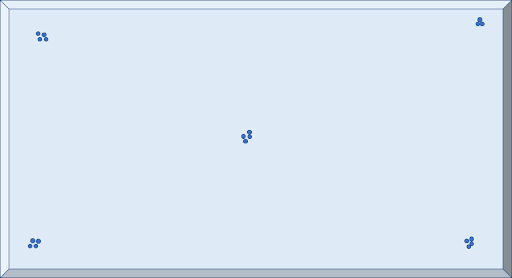Build a Full, Real-time, Microservices based Application using React, Websocket, Play for Scala, Kafka Streaming Platform and Cassandra
This post is about building an example application using React, Websocket, Play for Scala, Akka, Kafka, Alpakka Kafka, and Cassandra, among others.
We will build the Product Reviewer Microservices based application, a tiny part of an eCommerce business where people can make reviews on a particular product. Our focus will be on the reviews, not on the products or anything else, so we will have only one product in our system, and all reviews will be against that product.
By the end, you should at least have some few more ideas or options while designing your next real-time Kafka based application.
Let’s first see what the application looks like …
Below you can see a video of the example application in action.
The product in question is a Kobe Bryant LA Jersey. You can see the current reviews, and publish yours. Under the product image you have the reviews statistics.
This application is almost real-time. When you publish a new review, all connected users can see it, along with the updated statistics.
The way it works is straightforward. You just fill your name and email, you select a rating, you say something, and you publish.
If the name is empty, ‘Tom Dollars’ will be used.
If the email is empty, ‘tomdollars@example.com’ will be used.
If the content is empty, ‘(No content)’ will be used.
If you write an invalid email address, a security check will reject your review.
That is it!
The code is hosted on Github in two parts: the Backend part and the Frontend part. The README from the Backend part will show you all you need to do to deploy the application. Do not hesitate to open an issue if needed.
Now that you know what we are going to build, let’s start by drawing the big picture of our solution so we can have a better shared understanding of what is going on.
The picture below shows how our tools fit together to form our architecture:
The other picture below shows how messages drive our system:
OK let’s explain all this. The way the system works is quite simple and straightforward.
When a user posts a new Review, the Webserver, through its Kafka Producer, publishes two messages to Kafka: a new Task message and a SecurityCheckRequested message. The security check in this case is a simple validation of the email address format. The task object will have a status like PROCESSING, and will be store in Cassandra by a Connector, so the Front end can query it to know whether the review creation processed is completed or not.
The Security service consumes the SecurityCheckRequested message and proceed with the check, then publish a SecurityCheckProcessed message.
Note that the Security service will not update the Review object, nor will it publish a message on the reviews topic, it will just publish the result of its check an let the right service mutate the Review object. We are following the Single Writer Principle, which states that only one service should mutate the state of a given entity, and only one service should publish messages of a given type. In our case, only the Reviews service can update the Review object.
The Reviews service consumes the SecurityCheckProcessed message. Every Review has a status field, which can be APPROVED or REJECTED. The Reviews service will update the Review object status according to the security check result. The Reviews service will then publish either a ReviewApproved or a ReviewRejected message to the reviews-eventsource topic, again according to the security check result.
The Reviews service consumes the ReviewApproved and ReviewRejected messages from the reviews-eventsource topic, and then publish the referenced Review to the reviews-changelog topic where it will be consumed by a Connector and stored in Cassandra. Note that The reviews-changelog will store both APPROVED and REJECTED reviews. Nobody knows where a business value can come from, so better keep everything.
The Reviews service will then update the task created from the beginning as DONE, so the front-end can proceed to retrieve the result from Cassandra.
The Statistics service consumes the ReviewApproved messages and publish a ProductStatistic update for the corresponding product to the stats-changelog topic.
Whenever there is an update on the topics: tasks-changelog, reviews-changelog and stats-changelog, the Datastax Sink Connector will update the corresponding table in Cassandra.
When you launch the application in the browser, the Front end will fetch the current reviews and current statistics from Cassandra through the Webserver.
There is one component left, I call it The Killer Component, it is Alpakka Kafka Connector. It is a bridge between Kafka and Akka Streams. Basically, it allows you to create an Akka Streams Source, where the produced value are actually consumed from a Kafka topic.
When you launch the application on the browser, two Websocket connections will be established to the Webserver, one to get new reviews, and the other to get statistics updates. On the webserver side, the Socket handlers will just forward all messages from those specials Sources, an that is exactly what makes this application real-time. As soon as a message is published to the reviews-changelog and stats-changelog topics, the Socket handler will get it through Alpakka Kafka, and send it to the Front-end for display. Cool!
That is basically how the application works. If you have interrogation points in your mind, you should find answers in the remaining of the post or on the code repository.
In the architecture picture on the top, the blue portion is not part of our code, I call it the Infrastructure. We will start by setting the Infrastructure, that is Kafka and Cassandra, so we can start writing our code. Let's get started!
In this section we will get Kafka and Cassandra ready for our example application. We will assume you already installed both, and directly proceed to their setup for our example application. We personally used the Confluent Community Edition for Ubuntu for the Kafka Streaming Platform, and the Official Cassandra Docker Image for Cassandra, but others options are available. Just peek the one you feel more comfortable with.
Kafka
Our application will use five topics. You must run all the commands below from KAFKA_HOME.
Cassandra
Cassandra setup is straightforward, just run the script below. That will create the proreviewer Keyspace, and add the tables reviews_by_product, stats, and tasks, and create the materialized view reviews.
Datastax Sink Connector
Note that this step should be performed after setting up Cassandra, because the Connector will connect to Cassandra during its registration.
We used Kafka Connect in Distributed mode, but you can easily adapt the configuration for the Standalone mode.
Below is the body of our POST request:
Adjust the values to match your environment.
Just POST it to http://localhost:8083 (your Kafka Connect API interface) and you will be all set. After this, all messages published to the observed topics will trigger an Insert or Update in the mapped tables in Cassandra, everything is handled for you.
Now that we are all set with our Infrastructure, we can start writing our code, and we will start with our Microservices.
We will start by installing all dependencies.
Installing all dependencies
All our Microservices are developed in Scala, and we use sbt to manage the projects.
product-reviewer/build.sbt
product-reviewer/project/plugins.sbt
This define five projects:
- common (for common libraries)
- webserver
- reviews
- security
- statistics
Except the common project, all the others map to our Microservices.
Now that our projects directories are created and all dependencies downloaded, let’s start writing the actual code.
It is not possible to specify every steps here, so I will try to show the important pieces of code, hoping that they will convince you to look at the full code on the Github repository. Let’s start with the common libraries.
Common libraries
There are two important things in the common libraries: the Avro data models and an abstract implementation of the org.apache.commons.daemon.Daemon Interface.
Avro Data Models
I choose to create the Avro data models in the common project, so they are available to all the services. By making them a common concern, every schema change should be approved or at least noticed by all the teams. If you look into product-reviewer/common/src/main/avro/, you will see all the Avro schemas files:
./task.avsc
./reviews/entities.Review.avsc
./reviews/events/ReviewApproved.avsc
./reviews/events/ReviewRejected.avsc
./security/events/SecurityCheckRequested.avsc
./security/events/SecurityCheckProcessed.avsc
./statistics/entities/ProductStatistic.avsc
You can use the sbt-avro plugin to generate the Avro Specific Records Java classes.
The Daemon Interface
In the common project you will also find an abstract implementation of the org.apache.commons.daemon.Daemon Interface. All our Kafka Streams applications will extend that abstract implementation so they can be ran as Daemon if you want, using jsvc, but to keep things simple, we will not make use of jsvc when Dockerizing our example application.
Let’s move to our stream processing services: Security, Reviews and Statistics services.
The Security, Reviews and Statistics services are Kafka Streams applications. As such, I will just show you their stream topology code. You can see their full code on the code repository.
Security service stream topology
product-reviewer/security/src/main/scala/SecurityApp.scala
The application simply consumes all the SecurityCheckRequested event from the security-eventsource topic, performs its check, then publishes a SecurityCheckProcessed event still in the security-eventsource topic.
Let’s move to the Reviews service.
Reviews service stream topology
product-reviewer/reviews/src/main/scala/ReviewsApp.scala
The application first consumes all the SecurityCheckProcessed events from security-eventsource topic and using the branch processor, it creates two KStream, one for the VALID reviews and the other for the INVALID reviews.
On the VALID branch, the SecurituCheckProcessed data model is mapped to a ReviewApproved data model, and published to the reviews-eventsource topic.
On the INVALID branch, the SecurituCheckProcessed data model is mapped to a ReviewRejected data model, and published to the reviews-eventsource topic.
The application also consumes all the ReviewRejected and ReviewApproved events from the reviews-eventsource topic, map them to a Review entity, and publishes the entity to the reviews-changelog topic.
The application also consumes the tasks-changelog topic as a table, and perform a KStream to KTable join between the SecurityCheckProcessed KStream and Task KTable, then using our taskJoiner, it set the SecurityCheckProcessed's corresponding Task as DONE, and publish the updated Task to the tasks-changelog topic.
That is basically it. Let’s move to the Statistics service.
Statistics service stream topology
product-reviewer/statistics/src/main/scala/StatisticsApp.scala
The application simply consumes the ReviewApproved event from the reviews-eventsource topic, then set the key to the product_id, so all reviews for a given product will be a the same partition, then aggregate the reviews by the new product_id key.
aggregate is a state-full processor, it uses a state store, backed by a Kafka topic, to save the previous aggregated value.
Our Aggregator simple produce a new ProductStatistic data model based on the previous statistics and the ReviewApproved data model, and publish it as an update to the stats-changelog topic.
Let’s move to our last service, the Web Server
The Web Server service is a Play for Scala application. It contains Models, Controllers, Repositories, Services and Sources. Let's start with the models because they are used everywhere.
Models
Our Avro data models described previously are created to be serialized and deserialized as Avro. The models in this section are created to send data to the Frontend in JSON format. We could have struggle to do it directly with the Avro data models, but working with the models in this section is more convenient, and specially in a Scala perspective.
Some of those model extends the DomainModel Trait, which simply define a toDataModel method.
Task
product-reviewer/webserver/app/models/data/Task.scala
Review
product-reviewer/webserver/app/models/data/Review.scala
ProductStatistic
product-reviewer/webserver/app/models/data/ProductStatistic.scala
As part of the Models, we also defined the Messages protocol, that is the Events and Queries received by the service.
Messages protocol
product-reviewer/webserver/app/models/protocol/Messages.scala
Now let’s move to our single repository: ReviewRepo
Repositories
Reviews repository
That repository is our Data Access Object to fetch everything we need from Cassandra, it as an Akka Actor.
product-reviewer/webserver/app/repositories/ReviewRepo.scala
Let’s move to our single service, the ReviewManager
Services
ReviewManager
It is also an Akka Actor.
product-reviewer/webserver/app/services/ReviewManager.scala
Basically, when it receive a SecurityCheckRequested message from our Messages protocol, it publishes an Avro SecurityCheckResquested data model to the security-eventsource topic, and an Avro Task entity with a PROCESSING status to the tasks-changelog topic, then it returns that Task to the Frontend, so it can track the task status on Cassandra.
It also forward all queries to the ReviewRepo actor.
Let’s move to our sources.
Sources
You should be wondering on what I call a Source. If you remember our discussion on Alpakka Kafka, a Source here is that special Akka Streams Source that generate message from a Kafka topic. I made them first class citizen in our Play application, just like Models or Controllers. We will have two Sources, one for reviews and one for product statistics.
Reviews source
product-reviewer/webserver/app/sources/ReviewsSource.scala
Product statistics source
product-reviewer/webserver/app/sources/ProductStatsSource.scala
Those Sources will be used in the Socket handler to send reviews and statistics to the Frontend as they are available, making our application a real-time one.
Controllers
ReviewController
product-reviewer/webserver/app/controllers/ReviewController.scala
TaskController
product-reviewer/webserver/app/controllers/TaskController.scala
Routes
Let’s finally look at the routes file
product-reviewer/webserver/conf/routes
We have covered all the main pieces of code from the webserver service, and this close our coverage of our Microservices. Let's move to the Frontend.
Our frontend is based on React, TypeScript, NodeJS, NextJS and uses React Context for state management. The most important aspect of our frontend is data or state management. You can see the full code on the Frontend repository of our example application. Let's first see how posting a new review is handled.
Posting a new Review
product-reviewer-client/components/ReviewForm.tsx
At line 17 we perform the actual POST and receive the Task created by the ReviewManager from our webserver Microservice.
The pollUntilTaskFinished function (shown below) will try to fetch the task from Cassandra each 500ms, and check if it is DONE or still PROCESSING, and it will try to do it for a maximum of 60 times.
60 * 500ms = 30 seconds. So we are basically giving 30 seconds to our backend infrastructure to complete the process, after what we will issue a Timeout Error.
The task returned by our POST contains a resourceId, which is the ID of our newly created review. We use that ID in the callback to fetch the review from Cassandra and make it available to the frontend.
Now let’s see how reviews and statistics updates are fetched.
Initial load of reviews and statistics updates
The DataProvider Component
We have defined a DataProvider component wrapping a DataContext to keep our reviews and statistics data:
product-reviewer-client/data/DataProdiver.tsx
The Index Page
Below you can see how data are fetched when our index page load
product-reviewer-client/pages/index.tsx
The fetchReviews and fetchStats methods fetch all data and update the context.
Still on that index page, you can see the SocketProvider, used to fetch new reviews and product statistics updates as they are available. let's look at it.
Real-time reviews and product statistics update load
We defined a SocketProvider wrapping a SocketContext, to make the socket connection available to the component requiring it.
The SocketProvider Component
product-reviewer-client/data/SocketProvider.tsx
This component will automatically try to reconnect up to 10 times if the connection is closed, making it permanent.
Real-time reviews
Like you can see in the IndexPage, the ReviewsList component use the socket connection to retrieve review in real-time and add them to the DataContext:
product-reviewer-client/pages/index.tsx
product-reviewer-client/components/ReviewsList.tsx
Real-time product statistics updates
In the Product component, you can also see that the Stats component is provided a socket connection to fetch product statistics updates in real-time:
product-reviewer-client/components/Product.tsx
product-reviewer-client/components/Stats.tsx
We covered all the important aspects of data management in our frontend, and that close our coverage of the Frontend application.
Our example application was deployed using Docker. You will find all instructions on the code repository README.
I hope you enjoyed the post.







